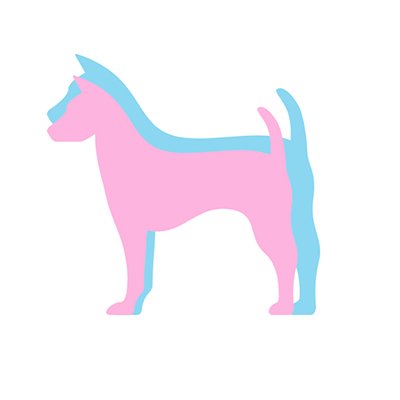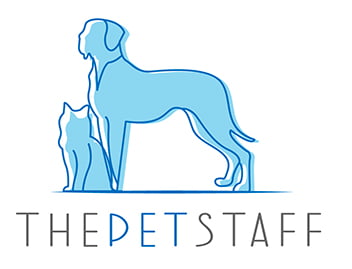Dorgis are a relatively new hybrid of dogs that have gained popularity given their connection to the royal family. These lovable and intelligent little dogs combine the cuteness of two long-bodied and stubby-legged dog breeds to create one fun-loving family dog with a big personality and loyal nature. They come in various colors and coat types but have the same outgoing and social temperaments.
So how do you know if the dorgi is the designer breed dog right for you? What are its exercise needs, grooming expectations, and possible health issues? Let's take a look.
Breed Characteristics
Temperament | Friendly, lively, and intelligent |
Intelligence | Moderate |
Affection/Friendliness | Affectionate and friendly towards family members |
Trainability | Moderately easy to train |
Mental Stimulation | Moderate |
Exercise Needs | Moderate |
Apartment Living | Can adapt to apartment living if exercise needs are met |
Family Friendly | Yes |
Pet Friendly | Yes |
Drooling Level | Low |
Energy Level | Moderate |
Loneliness Tolerance | Moderate |
Adaptability | Moderate |
Tendency to bark | Moderate |
Origin
The Dorgi dog breed is a hybrid cross of a dachshund dog or "badger dog" and a Pembroke Welsh corgi dog. Their origins are a bit of a mystery for sure, but lore has it that they have royal beginnings. Supposedly one of Queen Elizabeth II Pem Welsh corgis mated with Princess Margaret's Dachshund named Pipkin, creating the first litter of Dorgis. They continued to interbreed the dogs over the years, and the hybrid became a beloved fixture in the dog breed world. Queen Elizabeth, herself has had at least ten Dorgis over the years since then, and the mixed-breed dogs have only grown in popularity.
The Dorgi breed is not recognized by any major dog registry or kennel club, including the AKC (American Kennel Club), since there is no regulation process or standard for the breed. But the hybrid dog breed is recognized by a number of designer dog breed clubs like the Designer Dogs Kennel Club, the American Canine Hybrid Club, Designer Breed Registry, and the International Designer Canine Registry.

Breed Overview
Height: 9-12"
Weight: 15-28 lbs
Height: 9-12"
Weight: 15-28 lbs
Breed Group
Mixed breed
Life Span
12-15 years
Coat
Double
Coat Length
Short-medium
Hypoallergenic
No
Shedding Level
Moderate
Size
Dorgis are small breed dogs that grow to be 9 to 12 inches high and weigh between 15 and 28 pounds full grown.
Personality
The Dorgi dog breed is an outgoing one, and these social animals are playful, smart, bold, and loyal. This exuberant nature can be prone to bad habits and willfulness; however, consistent training and early socialization are necessary to ensure that only the best personality qualities are encouraged.
Appearance/Colors
The Dorgi parent breeds are both long, short-legged, small dogs, so the dorgi is a small dog with stubby legs, a fox-like face, and a long body. Their coat color and type vary greatly depending on parentage and may be brown, red, cream, white, fawn, chocolate, liver, blue, or black. Possible patterns include brindle, sable, bicolor, and black, and tan. The coat could be short and smooth or long and wiry. The ear shape will also greatly depend on parentage, and Dorgis can have pointy, erect ears or long floppy ones.
Temperament
The friendly personality of a Dorgi makes it a great family dog. It does very well with older children, though its tendency to bark may not make it appropriate for families with small children.
Dorgis are great for seniors since they do not have particularly excess exercise needs and don't take up much space. However, co-dependency and strong attachment can lead to separation anxiety if not trained to be comfortable alone.
Dorgi can be a bit wary of strangers, but with proper socialization, they can learn to be polite and deal with the situation appropriately.
Diet/Nutritional Needs
One of the greater concerns for Dorgi owners is this breed's potential for weight gain. Regulating your dog's diet is extremely important if you want to avoid health issues related to or worsened by obesity in Dorgis. Consult your vet on the kind and quantity of dog food your dorgi will need to remain healthy given its age, size, and activity levels. Avoid feeding your Dorgi table scraps or excessive treats, and always ensure that fresh water is available.
Activity/Exercise Needs
Dorgis are playful pups, have average exercise needs, and often adjust to the lifestyles of their owners. However, to prevent obesity and promote optimal health, it is important to provide daily activities involving physical and mental stimulations.
Dorgis come from a hunting dog and a herding dog, so they will enjoy running and chasing activities. They will enjoy going to the dog park and playing games like fetch and hide and seek. Mental enrichment and puzzle toys can provide healthy mental stimulations which can keep bad behaviors under control.
Unexercised and bored Dorgis may resort to destructive chewing and excessive barking. They will also be much more likely to gain unhealthy weight.
Grooming Needs
The Dorgi dog breed sheds an average amount of dog hair. If it inherits a smooth short coat, its grooming needs will be less, and if it inherits a long wiry coat, the grooming needs will be higher. Regardless you will want to brush your dorgi at least weekly, increasing the frequency as needed. Floppy-eared Dorgis will need extra care given to their ears to ensure they do not get infected or irritated by wax buildup or debris. Nails should be kept short and trimmed at least once a month. You will have to bathe long-haired Dorgis a bit more often than short-haired Dorgis, whose coat often stays cleaner and can often be wiped clean with a damp towel as needed.
Adaptability
Dorgis thrive on human interaction, and so long as they are with their people, they tend to thrive regardless of where they are. They can be apartment friendly though their barking could become an issue. They may have trouble getting along with other dogs or other pets since they may develop a habit of chasing them around. This behavior can be stemmed if caught early and consistently discouraged at a young age. They should not be left too long alone as they may exhibit excessive barking when they become bored.
Trainability
Given the high intelligence of the Dorgi breed, it is very important to train and socialize Dorgi puppies early on and remain consistent throughout their lives. Socialization is particularly critical if you do not want a dog that is easily upset by strangers, other animals, or new situations.
From birth to 16 weeks is a critical period for socialization. So try to expose your puppy to as much as possible in this window. Obedience classes can begin around 8-16 weeks old, and your puppy should be enrolled in proper classes as soon as they can safely. These dogs are very smart and tend to be willful, so consistency and patience are critical to success. Recall (coming when called by name) is one of the more important lessons your dorgi will need to learn early on since they can easily become fixated on what they are chasing or getting into dangerous situations.
Life Expectancy
As a small breed dog, healthy Dorgis can live quite long lives, with a life expectancy of 12-15 years.
Potential Health Problems
The dorgi is a relatively healthy hybrid breed. The most common issues a Dorgi might suffer from is relating to their long backs and their potential for weight gain.
Patella Luxation
This short legs dog with a long-bodied breed can get a condition called patella luxation. This is where the kneecap slides 'out of place' or 'dislocated.'
Hip and Elbow Dysplasia
Due to purebred corgis and Dachshunds having a long back, they are prone to structural problems like hip dysplasia and elbow dysplasia, resulting in the malformation of a dog's joints.
Legg-Calve-Perthes Disease
This is the condition in which the head of the femur bone spontaneously begins to degenerate, which ultimately leads to lameness.
Intervertebral Disc Disease
Because of its long bodies, dorgi is at risk for intervertebral disc disease (IVDD). IVDD is a spinal disorder resulting from herniating an intervertebral disc, which can be caused by old age or injury.
There is no preventing it from getting IVDD, but you can talk to your veterinarian about strengthening your dog's core, which can help recovery if it develops the condition.
Degenerative Myelopathy
Pembroke Welsh corgis are particularly susceptible to degenerative myelopathy. Therefore, there is a chance dorgi can inherit this disease. Degenerative myelopathy is an incurable, progressive spinal cord disease that results in increased hip weakness and eventual paralysis—similar to amyotrophic lateral sclerosis (ALS) in humans.
According to UC Davis, this neurologic disorder caused by a gene mutation typically affects dogs eight years or older. Affected dogs may fully lose the ability to walk six months to 2 years after the onset of signs.
To determine if your dorgi carries the gene and is at risk or not, you can get DNA testing.
